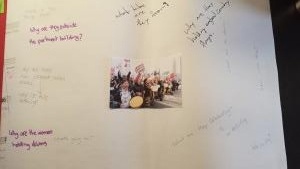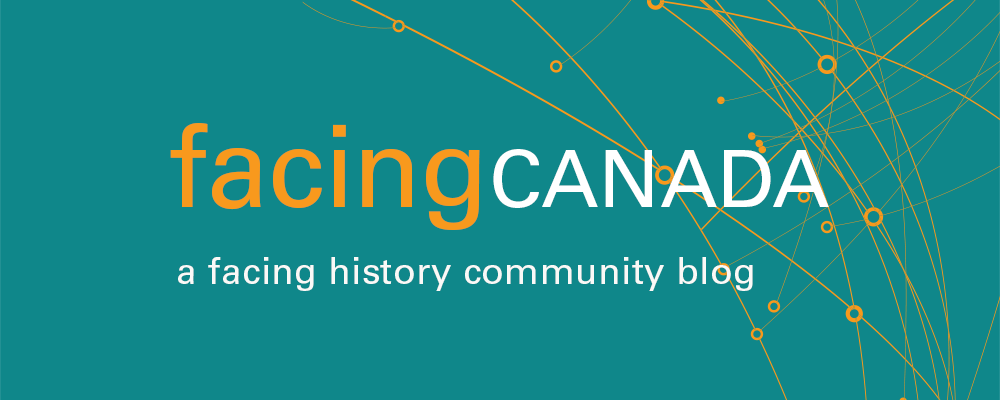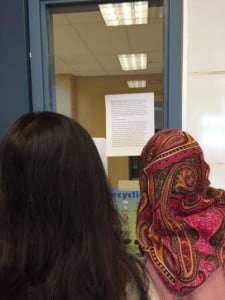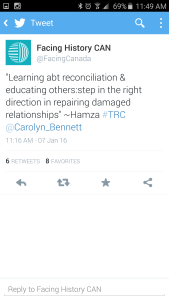Bringing Indigenous Voices into the Classroom
In December of 2012, I visited the Woodland Cultural Centre and former Mohawk Institute in Brantford, Ontario for the first time. This visit had a lasting impact upon my understanding of the residential school system in Canada. Subsequently I asked myself, how could I further embed Indigenous history into my courses?
This semester, at the beginning of my Grade 10 Canadian History course, I implemented a lesson that I
 adapted from OHASSTA’s website, “First Nations, Métis and Inuit Voice and Continuity and Change”. The lesson helped showcase Indigenous history as one of the themes of the course, while allowing me to introduce the historical thinking concept of change and continuity.
adapted from OHASSTA’s website, “First Nations, Métis and Inuit Voice and Continuity and Change”. The lesson helped showcase Indigenous history as one of the themes of the course, while allowing me to introduce the historical thinking concept of change and continuity.
Students were required to assess what level of voice they thought First Nations, Métis and Inuit peoples had from 1914 to the present. The students analyzed various images of Indigenous peoples, asking critical thinking questions developed using criteria we established as a class. They posed questions like, what are they celebrating or defending, and why was this campaign created? Their questions made me wonder, how can I bring more Indigenous voices into our classroom?
An Introduction to Stolen Lives
The answer to my question came from my colleague, Cheryl Payne-Stevens, who is currently working with Facing History and Ourselves in Toronto as a program associate.
During a visit to my classroom this past November, Cheryl told me about Facing History’s new resource Stolen Lives: The Indigenous Peoples of Canada and the Indian Residential Schools. She encouraged me to attend the book launch on November 26th as well as the teacher workshop in December.
I am glad that I attended both. At the book launch I heard from various individuals who understood the importance of having a resource such as Stolen Lives to help guide teachers in educating their students about the residential school system. Additionally, I was captivated by scenes reenacted from Drew Hayden Taylor’s play, God and the Indian, which illustrated the legacy of the residential schools.
While attending the teacher workshop, I was moved by residential school victor, Theodore Fontaine’s words and began to think about the process of reconciliation. As part of the workshop, we were asked to write down our personal commitment to reconciliation. I decided that mine would be to educate and encourage my students (and others) to act. As a way of acting, I wanted to help implement recommendation #62 from the Truth and Reconciliation Commission (TRC).
Education for reconciliation
- We call upon the federal, provincial, and territorial governments, in consultation and collaboration with Survivors, Aboriginal peoples, and educators, to:
- Make age-appropriate curriculum on residential schools, Treaties, and Aboriginal peoples’ historical and contemporary contributions to Canada a mandatory education requirement for Kindergarten to Grade Twelve students. (Taken from the Truth and Reconciliation Commission, 2015)
A Lesson on the Truth and Reconciliation Commission
At the end of the workshop, I asked Cheryl if she could come back into my classroom to do a lesson on the TRC. Cheryl happily agreed and included me in the planning of the lesson. Students were prompted with the question, “What role can a truth and reconciliation commission play in helping a nation, individuals and groups heal from past trauma?” To answer this, students gathered primary source evidence from Indigenous and non-Indigenous peoples involved with the TRC.
After students discussed the implications of a truth and reconciliation commission, we discussed some of Canada’s TRC’s Calls to Action. Using the design thinking process along with the prompt “How can we participate in reconciliation?” students brainstormed their ideas. I was impressed with the thoughtfulness of their suggestions. Cheryl encouraged students to make a personal commitment to reconciliation, similar to what we did in the teacher workshop.
One of the most exciting parts of the lesson was when students were given the opportunity to post their personal commitments or other statements they made on Twitter. They were encouraged to tweet them to individuals like our Minister of Indigenous and Northern Affairs, Carolyn Bennett, as well as Aboriginal activist and writer, Wab Kinew.
The students came up with meaningful posts aimed at bringing attention to the process of reconciliation as well as the importance of hearing Indigenous voices in our society. To the students’ excitement, many were favourited and some were retweeted by Carolyn Bennett.
Thanks to the support of Cheryl and Facing History Canada, I feel more confident about teaching Indigenous history in my courses. As part of my commitment to the process of reconciliation, I plan on using Stolen Lives to help create future lessons. Additionally, I hope to continue my goal of reading books about the experiences of Indigenous Peoples in Canada, so that I can bring their voices into my classroom.
How do you plan on using Stolen Lives in your classroom?
What is your personal commitment to truth and reconciliation?
If you are interested in learning more about “Stolen Lives” and strategies for teaching this difficult history, check out this seminar on February 7th!




